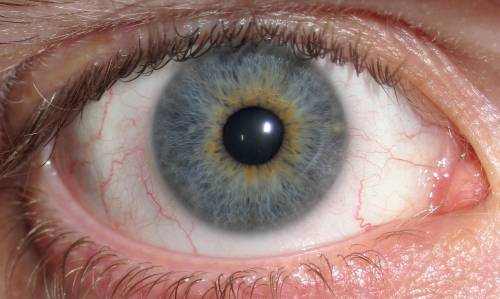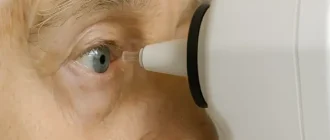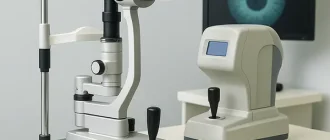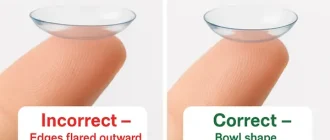Understanding ophthalmic abbreviations is essential for accurately interpreting clinical notes and prescriptions. In eye care, Latin-derived terms and specific acronyms such as OD, OS, and OU are routinely used by medical professionals. This article provides a clear explanation of what each abbreviation represents—particularly OU, which refers to both eyes—and outlines how these terms are applied in ophthalmology.
Common Abbreviations in Eye Care
Medical professionals use Latin-based abbreviations to quickly denote which eye or eyes are affected. Here are some of the key abbreviations used in ophthalmology:
| Abbreviation | Full Term | Meaning |
|---|---|---|
| OU | Oculus Uterque | Both Eyes |
| OD | Oculus Dexter | Right Eye |
| OS | Oculus Sinister | Left Eye |
OU is the abbreviation for “both eyes,” while OD and OS stand for the right eye and left eye, respectively. These abbreviations are essential in optometry, ophthalmology, and when prescribing corrective lenses or treatments.
Complete List of Ophthalmology Abbreviations
For those who want to dive deeper, here is a more comprehensive list of abbreviations related to ophthalmology. These include abbreviations used for diagnosis, treatment, and clinical descriptions.
| Abbreviation | Full Term | Meaning |
|---|---|---|
| AC | Anterior chamber | The fluid-filled space inside the eye |
| ALT | Argon laser trabeculoplasty | A procedure to treat glaucoma |
| APD, RAPD | (Relative) Afferent pupillary defect | A pupil abnormality |
| ARMD, AMD | Age-related macular degeneration | A common eye condition in older adults |
| ASC | Anterior subcapsular cataract | A type of cataract |
| BDR | Background diabetic retinopathy | Early-stage diabetic eye disease |
| BRAO | Branch retinal artery occlusion | Blockage in a branch of the retinal artery |
| BRVO | Branch retinal vein occlusion | Blockage in a branch of the retinal vein |
| CACG | Chronic angle-closure glaucoma | A type of glaucoma |
| CE/IOL | Cataract extraction with intraocular lens implant | Cataract surgery |
| CNVM, CNV | Choroidal neovascular membrane | Abnormal blood vessel growth in the eye |
| CRVO | Central retinal vein occlusion | Blockage of the main retinal vein |
| CSME | Clinically significant macular edema | Swelling of the retina |
| DES | Dry eye syndrome | Lack of adequate moisture in the eyes |
| DSAEK | Descemet stripping automated endothelial keratoplasty | Corneal transplant procedure |
| ECCE | Extracapsular cataract extraction | A method of cataract removal |
| ERM | Epiretinal membrane | Scar tissue on the retina |
| HM | Hand motion | Visual acuity test result |
| IOL | Intraocular lens | Artificial lens used in cataract surgery |
| IOP | Intraocular pressure | Fluid pressure inside the eye |
| LASIK | Laser in situ keratomileusis | Eye surgery to correct vision |
| LP | Light perception | Ability to perceive light |
| MD | Macular degeneration | Eye disease that affects central vision |
| NLP | No light perception | Complete vision loss |
| NS | Nuclear sclerosis | Hardening of the central eye lens |
| POAG | Primary open-angle glaucoma | A common type of glaucoma |
| PRK | Photorefractive keratectomy | Laser surgery to reshape the cornea |
| RD | Retinal detachment | Separation of the retina from the back of the eye |
| VA | Visual acuity | Sharpness of vision |
| YAG | Yttrium-aluminum-garnet laser | Laser treatment for cataracts |
This list is not exhaustive, but it provides an overview of the most common abbreviations you may encounter.
Why Abbreviations Matter
The use of abbreviations in ophthalmology is primarily to ensure efficient and accurate communication between medical professionals. These abbreviations are universally recognized within the field, which reduces the risk of errors when treating patients. However, for patients, these abbreviations can often be confusing. Understanding the meaning of abbreviations like OU, OD, and OS is crucial to properly follow treatment instructions.

Our Editorial Team’s Advice
Navigating eye care and understanding medical terminology can be challenging, but knowledge is power. If you ever receive a prescription with abbreviations you don’t understand, ask your healthcare provider to clarify. It’s essential for your health and peace of mind to know exactly what treatment you’re receiving and how to use it. Eye care is a team effort between you and your doctor, and informed patients are empowered to make the best decisions for their vision.
This infographic maps where key abbreviations appear across the patient journey—examination, diagnosis, treatment, and prescriptions—clarifying how terms like VA, IOP, ARMD, PRK, and OU are applied in real clinical workflows without repeating definitions from the article.





